By Tom Wintaugh | April 25, 2023

See why top ecommerce brands use Miva’s no-code platform to run
multiple stores, manage massive catalogs, and grow their revenue.
In ecommerce, the product’s the thing. In other words, the way you present, describe, and sell products is the primary function of your entire online business—and developing effective website merchandising is one of the most essential techniques for successful ecommerce. In this blog, we will explore ways ecommerce businesses can leverage proven digital merchandising techniques to drive conversions, and outline the steps to take when you’re ready to build a merchandising strategy that sells.
Ecommerce merchandising refers to the strategic display, promotion, and organization of products in an online store to attract customers and encourage them to make purchases. It involves product presentation (images, videos, descriptions, visualizers), website layout and navigation, promotions, and cross-selling/upselling. The goal of product merchandising is to present products in ways which drive conversions, increase sales, and boost customer satisfaction and loyalty.
Physical and digital product merchandising share the same underlying goal: to attract customers and encourage them to make purchases. However, there are inherent differences between the two due to the distinct nature of offline and online environments:
Customer interaction: In physical stores, customers can touch, feel, and try products before purchasing, while in digital stores, they rely on images, videos, and descriptions to understand the product's features and quality. This is the key hurdle for selling products online.
Store layout and navigation: Physical store merchandising focuses on shelf placement, product grouping, and in-store signage to guide customers through the shopping experience. In contrast, digital merchandising utilizes website layout, search functionality, and filters to help customers navigate the online store. In this blog, we look at what happens when you combine "bricks & clicks."
Personalization: Online stores can leverage customer data and browsing history to offer a personalized shopping experience, tailoring product recommendations and content for individual customers. In physical stores, personalization is limited to customer interactions with sales associates and visual merchandising that appeals to a broader audience.
Data-driven insights: Digital merchandising allows businesses to access real-time data on customer behavior, preferences, and purchasing patterns, enabling them to optimize their merchandising strategies based on data-driven insights. Read more about ecommerce data analytics here. Physical stores can gather data through methods like customer surveys or analyzing sales data, but the insights are generally less detailed and timely compared to online data.
Scalability and inventory management: Online stores can showcase an extensive range of products without the constraints of physical retail space, making it easier to manage inventory and cater to a wider audience. Read more about cost cutting digital inventory strategies here. Physical stores have limitations on the number of products they can display and stock, requiring more strategic planning and inventory management.
Promotions and pricing: Digital merchandising allows for dynamic pricing and targeted promotions based on customer behavior, preferences, and real-time market conditions. Physical stores typically have less flexibility in adjusting prices and promotions quickly.
One of the main challenges for ecommerce merchants is effectively replicating the sensory experience of physical stores, as online customers cannot touch or hold products before ordering. Online merchants can address the limits of digital product discovery and purchasing by using content to answer every question a shopper might have about a product. High quality images can show the product’s scale and usage, and copy can deliver exact specs along with FAQs and use cases. More elaborate digital merchandising can address the “touch” issue with interactive product builders, visualizers, and showrooms which help shoppers evaluate the product as if it were sitting in front of them.
Effective website merchandising brings together many informational, organizational, and creative marketing elements to create a compelling sales pitch for each product. Each of the following pieces are the raw materials in the online seller’s merchandising toolkit—learning how and where to thoughtfully deploy these elements will be different based upon website, product, and customer.
Provide clear, accurate descriptions along with high-quality, professional images to help customers understand the product's features, specifications, and benefits. Excellent product content should answer the customer’s questions about the product at a glance, and help them visualize what it’s like to use in the real world. Read more about how to write the perfect product description here.
Price and availability information is an important part of website merchandising. Clearly display product prices, discounts, promotions, and stock levels to entice customers and prevent abandoned carts due to out-of-stock items. We wrote more about ecommerce pricing strategies here.
Encourage and showcase customer reviews and ratings for social proof. Video reviews which demonstrate functionality and features in a tactile way can be very effective—in fact, any kind of video can help successfully merchandise products…91% of shoppers surveyed report that they want to see more video content from brands.
Product merchandising begins before the product page. Organize products into categories with filters and implement a robust search functionality to help customers easily find desired products. For a discussion of more advanced search features, read this blog.
Recommend related or complementary items and personalize the shopping experience based on individual customers' browsing history and preferences. Encourage customers to upgrade items, or browse similar items in the store.
Helping customers know which action to take next is an important part of merchandising products. Use clear and compelling CTAs to guide customers through the purchasing process, encouraging them to take desired actions around products such as "Add to Cart" or "Buy Now." We outlined more ways to optimize websites for conversion here.
Approaching a merchandising strategy for an online business requires a comprehensive understanding of your target audience, products, and market.
None of these strategies should remain static. Successful stores are always experimenting, analyzing, and refining their merchandising approach. By staying agile, merchants can adapt to changes in customer behavior and market trends, so be prepared to keep evolving your strategy to maintain a competitive edge.
By understanding the essential elements of ecommerce merchandising, capitalizing on the differences between online and offline selling, implementing best practices, and continually refining your strategies, you can use website merchandising as a primary tool for driving conversions. Your products are the main reason shoppers have come to your store. Equip your customers with all of the information they need to understand products and visualize using them, and you are setting the stage for great sales results.

Katy Ellquist, Miva’s Digital Marketing Strategist, is an accomplished writer, marketer, and social media analyst who has created sophisticated content campaigns for a broad range of professional clients. She brings to Miva a complex understanding of ecommerce trends and techniques, building upon extensive digital agency experience and a prior role as direct liaison to Miva’s top accounts. Katy is a regular contributor to the Miva blog, covering essential ecommerce topics like design & development strategy, site optimization, and omnichannel selling, with the goal of increasing the actionable knowledgebase of the entire Miva community.
Love it? Share it!
No worries, download the PDF version now and enjoy your reading later...
Download PDF